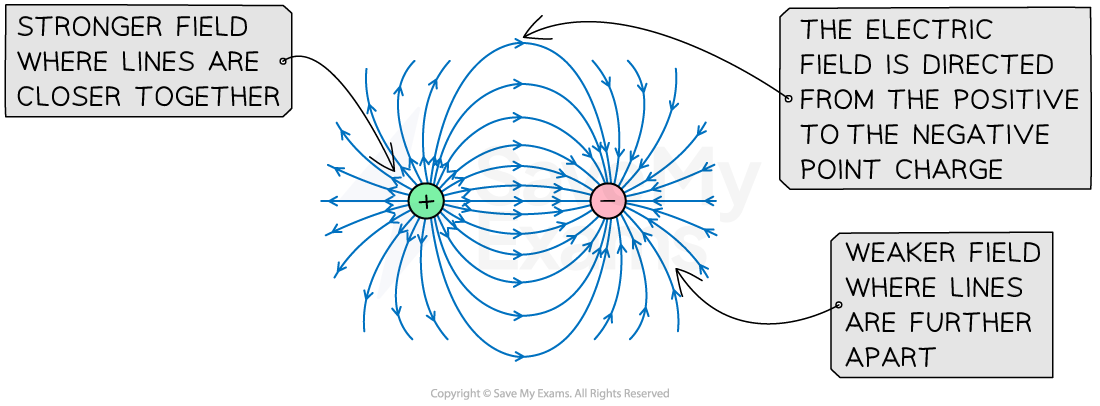Electric Fields (SQA National 5 Physics): Revision Note
Exam code: X857 75
Did this video help you?
Electric field effects
An electric field is defined as:
A region of space in which an electric charge experiences a force
The direction of an electric field at a point is defined as:
The direction of the force on a positive charge at that point
Charged objects create electric fields around themselves
This is similar to how magnets create magnetic fields
An electric field is a vector quantity as it has both magnitude (size) and direction
Electric fields around charges
Electric field lines are
used to represent the direction and magnitude of an electric field
always directed from the positive charge to the negative charge
Where field lines are closer together, the field is stronger
Where field lines are further apart, the field is weaker
Electric field between two parallel plates
The electric field between two parallel plates is a uniform electric field
The field lines are:
directed from the positive to the negative plate
parallel
straight lines
Electric field lines between two oppositely charged parallel plates

Electric field around a point charge
Around a point charge, the electric field lines are directly radially inwards or outwards:
If the charge is positive (+), the field lines are radially outwards
If the charge is negative (-), the field lines are radially inwards
Electric field lines near positive and negative point charges

Electric field between two point charges
For two opposite charges:
the field lines are directed from the positive charge to the negative charge
the closer the charges are brought together, the stronger the attractive electric force between them becomes
Electric field lines between two opposite charges

For two charges of the same type:
the field lines are directed away from two positive charges or towards two negative charges
the closer the charges are brought together, the stronger the repulsive electric force between them becomes
there is a neutral point at the midpoint between the charges, where the resultant electric force is zero
Electric field lines between two like charges


Unlock more, it's free!
Did this page help you?